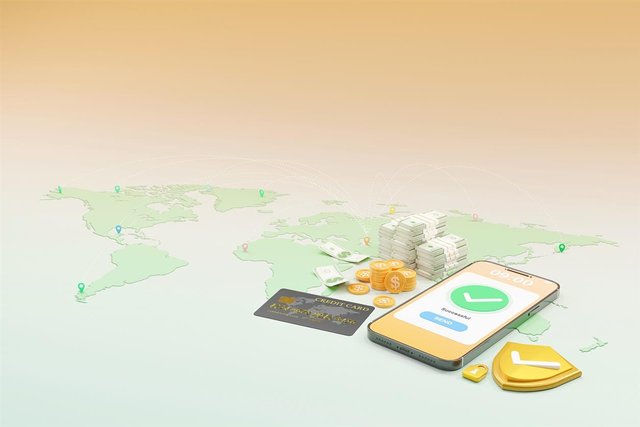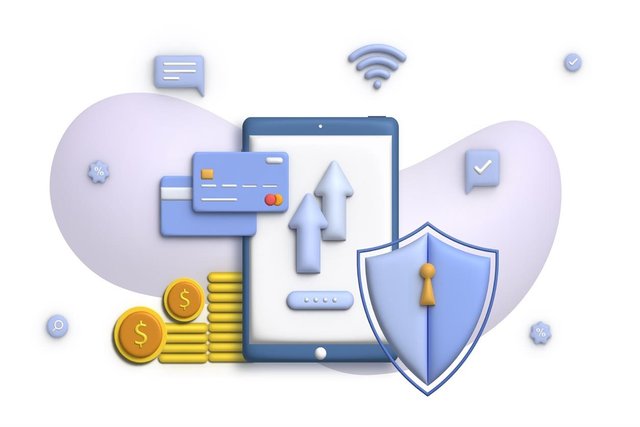The Neobanking Revolution: Is This the End of Traditional Banks?
The Neobanking Revolution: Is This the End of Traditional Banks?

Introduction
The digital era and changing consumer behavior have indeed made the emergence of neobanks possible as a revolutionary technological platform. Neobanks, which are digital-only banks, use the modern technology to provide banking experience that is simple and user-friendly with better advantages in regard of time and cost. This article will dive into the implications that the neobanking revolution has for the traditional banking institutions, the latest studies and determine if a scenario that signals the death of the traditional banks is possible.
The process of the Genesis and Development of the Neobanking.
Banks that are beyond banking started as fintech firms that wanted to end the traditional banking model. In the past decade, the increase in the customer base of these digital banks has been no less than drastic. Through system of low costs, decreased fees and creating better experience for customers, neobanks have been able to fill a big gap in the banking sector.
Consumer Preferences Drive Innovation
One of the focal points of the neobanking revolution is its inherent ability to piggyback on the increasing call for digital and more reachable banking services. Large personnel, mainly the millennials and Gen Z, prefer the banking solutions that are both easy to use and gives immediate information form the device. Moreover, the global financial industry reveals a growing need for financial inclusion among the low-income groups, which is something neobanks directly provide for as they reduce operational costs and hence remove hindrances to entry for many.
Technological Advancements Underpinning Neobanking
At the core of neobanking are a pack of tech-based upgrades. Digital banks (a.k.a neobanks) are revolutionizing banking sector by AI and machine learning that customize banking experiences, besides maintaining security and transparency through different technologies. Adding more features like Robotic Process Automation (RPA) and smart contracts (SC) has allowed operations to become more seamless thus the need for many physical branches has been reduced.

The Niche Contribution of Neobanks in the International Financial Regularity.
Even though the traditional banking community has been predicted to be unduly replaced by neobanks, the neobanks are actually just supplementing. In areas like the UAE, as indicated by S&P Global Ratings, neobanks are likely to be alongside traditional banks. They probably will serve different groups and market segments.
Strategic Adaptations by Established Banks
Traditional banks have not been sit-by in the face of these changes. Research from Economist Impact explains the significant shift toward cloud migration by European banks together with the competition pressure and improvements in their digital offerings. This flexibility and readiness to take up technology digitally is the key for the traditional bank to stay in the changing segment of financial market.
The economic influence of neobanking.
Neobanking is a revolutionary impulse for the whole economic system. Demystifying banking services and allowing for equity is one of the most significant functions that are done by neobanks in financial inclusion. As service providers to the communities that previously had no banking services or those without any credit, they contribute to economic activity and give rise to greater economic equality.
Challenges and Regulations
Unquestionably, neobanks exhibit many advantages, but they also face serious issues in terms of the regulatory part. Unlike physical banks, neobanks are a digital entity and can operate across nations. This further complicates the compliance with different financial regulations around the world. This calls for a high level of international law knowledge and in many cases, a flexible approach to regulations for financial operations.

Environmental Impact and Sustainability
The other dimension of the neobanking revolution that is rarely acknowledged is its influence on the environment. Mainly branches of traditional banks require vast amounts of energy, while digital neobanks have significantly less energy consumption. This aspect probably making neobanks more attractive to the environmentally-conscious consumers, fitting financial services with the world-wide trend towards sustainability.
Enhancing the Human Experience
It is the technology on which neobanks thrive but the personal banking experience they offer is highly enhanced. Through data analysis and AI, neobanks have the ability to give customer-focused financial advice which will address the personal needs of each customer by providing state-of- the-art, innovative solutions. This may involve adjusted saving plans and an automation of financial products pricing for example of loans and insurance.
Why is Data Security So Important?
Unlike other regular sectors, digitalization of finances is generally accompanied by problems of data security. Developing up-to-date security technology to prevent all types of internet threats to sensitive data is one of the things neobanks have to do. Investments in cybersecurity technologies not only safeguard customers but also increase trust which is what is needed for a bank to succeed more and become more popular.
Education and Digital Literacy
With a gradual shift of the banking industry to digital platforms, it is necessary to provide publicly accessible consumer education programs and digital literacy knowledge. Educating the customers on the secure utilization of digital banking instruments will protect the customers from the risks and enhance the total efficiency of the neobank solutions, as well.

Partnerships and Collaborations
Neobanking future might expect for more collaboration among both digital and traditional banking institutions. Such partnerships can perfectly optimize their effectiveness wherein traditional banks use their knowledge in risk management and regulatory compliance, and neobanks that offer innovations and client-centric technologies.
The Future Outlook
The cloud between neobanks and traditional banks seems to be the one of sharing and mutual improvement. The neobanks will continue evolving and emerging offering services driven by technology and consumers' needs in the long run. Consequently, traditional banks will also be forced to adapt by most probably creating a hybrid model that will have a mix of digital and physical banking services to satisfy the wide market.
Engaging the Future
As consumers one of the vital tasks is too abreast with this evolving banking mechanism including neobanks and conventional banks. Taking advantage and adapting yourself to the fintech revolutionary changes and innovations not only improves the individual money management but also help to boost the economy development. The financial services’ trip is towards being comprehensive, improved, and customer-oriented through net banking which uses three key characteristics: inclusivity, efficiency, and personalization.

Conclusion
As the neobanks’ revolutionary achievements are reaching out an increasingly wide audience, it doesn’t mean death for the traditional banks also. On the contrary, it envisioned an advanced banking technology where digital banking and traditional banking share the same platform and are mutually reinforcing. Both the centralized and decentralized banks either what they play, and their coexistence may probably contribute to the setting of a more stable, comprehensive and diversified financial services landscape.
Neobanks can serve as the term towards not only the challenge of the conventional banking sector but also the opportunity with which the industry could be updated by technology and better the consumer experience on a global scale. On that note, the symbiotic relationship between the old and new platforms is already evident, and it will most definitely influence the journey towards a new financial world.
Neobanking is the new force that is challenging the structure of the financial market. It is not the end of traditional banking; however, it is, surely, the mile stone that reshapes the ways of banking services structure and delivery. The win-win consequences of this revolution include better services for both buyers and financial institutions, extended accessibility, and a more inclusive financial system at large.
Through the digital transformation, both banks and consumers must change in order to preserve their desirability. Moving forward, the relation of traditional financial institutions with neobanks will be the main definer of the new banking era, which is at the same time the future that will come and is worth having.
Is this the stop of traditional banks? Not quite, but it clearly is a brand-new beginning in the ever-evolving narrative of economic services Neobanking, via ushering in a wave of heightened performance and client-centricity, is right here now not simply to live however to revolutionize the banking enjoy. As we look to the future, one issue stays clear: the economic panorama will preserve to innovate and adapt, pushed with the aid of the desires and alternatives of its users.
References
- https://www.whatech.com/og/markets-research/it/772307-neobanking-market-projected-to-exceed-usd-2078-54-billion-by-2030-fueled-by-digital-evolution
- https://www.financemagnates.com/fintech/payments/the-evolution-of-digital-banking-from-neobanks-to-embedded-finance/
- https://www.businesslive.co.za/bd/opinion/2024-03-08-sipho-ngwenya-can-sa-embrace-the-neobanking-revolution/
- https://www.ey.com/en_in/technology/ey-tech-trends-chapter-eight-top-fintech-trends-in-2023
- https://fintechmagazine.com/sustainability/17-fintech-trends-you-should-know-about-ultimate-guide
- https://economymiddleeast.com/news/neobanks-and-traditional-banks-in-uae-a-winning-combination/
- https://thepaypers.com/online-mobile-banking/economist-impact-european-banks-embrace-cloud-migration--1266811
- https://www.mckinsey.com/industries/financial-services/our-insights/fintechs-a-new-paradigm-of-growth
- https://www.fintechnexus.com/banking-revolution-a-new-wave-of-digital-banking-in-the-caribbean/
- https://economictimes.indiatimes.com/tech/trendspotting/explained-neobanks-the-next-evolution-of-banking/articleshow/86836735.cms?from=mdr
- https://www.linkedin.com/pulse/neobanking-future-banking-here-keshav-bagri
- https://inc42.com/resources/how-neobanks-are-reshaping-the-future-of-banking/
- https://www.researchgate.net/publication/371451805_Neo_Banks_A_Paradigm_Shift_in_Banking
- https://www.linkedin.com/pulse/neobanks-digital-revolution-transforming-traditional-banking-v3yif
- https://icmai-rnj.in/public/journals/255/images/Volume-49-December-2023.pdf
- https://iibf.org.in/documents/BankQuest/NeoBanks%20Future%20Prospects%20Challenges%20and%20Strategies%20Jigmit%20Stobdan%20and%20Dr.%20Sunil%20Kumar.pdf
- https://kadence.com/en-us/the-rise-of-neobanks-and-the-impact-on-traditional-banking/
I'm hoping you all enjoy this.
Thank you, my friends.
With best wishes,
Letssittt.
https://x.com/jerilforgrg/status/1783553978095350012
Upvoted. Thank You for sending some of your rewards to @null. It will make Steem stronger.